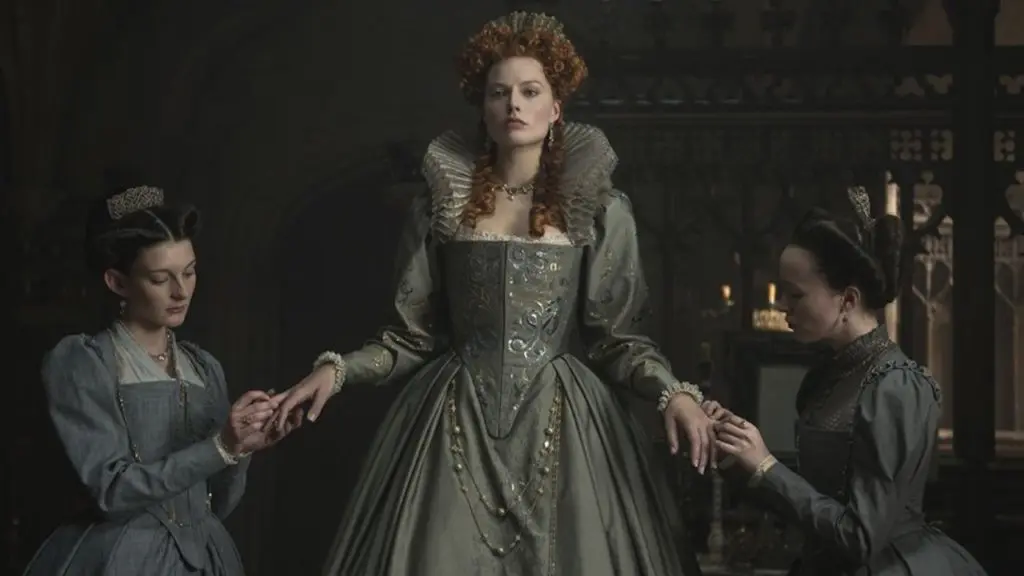Summary
Mary Queen of Scots has a fascinating subject and two impeccable lead actresses, but falls short of the mark.
Mary Queen of Scots is one of those historical figures that everyone was always making stuff up about. She’s a whore, she murdered her husband, she conspired to depose the queen of England, you know, the usual talk from the haters. But what’s interesting about Mary is that she was exactly the kind of wild card where literally any of the above allegations could have been true. And because historians have historically been terrible at keeping accurate records of those darn female monarchs, so much of what we know about their reigns comes from the men around them, all with their own agendas and axes to grind.
For her part, Saoirse Ronan plays the ill-fated queen of Scotland as enigmatic. She’s impetuous and hot-headed, but also capable of shrewd decision-making and eager to take her responsibility to her people seriously. It’s difficult to ascertain exactly how much backlash against her was warranted, and whether or not she played an active role in many of the schemes she was accused of. But the film clearly sees her as a wronged party, flawed and inexperienced but ultimately betrayed by the men in her life.
That is, by the way, the tie that binds her and her sister Queen Elizabeth I of England more than any familial association: the men in their lives are deeply disappointing. You can understand the desire for kinship both women must have felt, being surrounded by men who wanted to make decisions for them and constantly thought they knew best.
And having these two characters juxtaposed in this way makes it clear that Mary’s decision to wed in the first place may have been a factor in her downfall. Her connection to Lord Darnley began a series of scandals through which the young queen could never hope to recover. Elizabeth, in contrast, famously never married, and took on a sexless public image in part to help her advisors and countrymen forget that she was a woman at all.
This is where Margot Robbie comes in, fully occupying the smaller yet in many ways more interesting role. She continues to demand attention with her incredible presence as Queen Elizabeth, the elder stateswoman of this cinematic duo. Her performance as Elizabeth is commanding, yet she brings vulnerability and nuance to her limited screen time. We see a sense of inadequacy, pride, and wisdom war on her expressive face. Despite a part of her longing to be a wife and mother, she accepts the inevitability of the succession battle far before her advisors, many of whom seem to be using Mary’s Catholicism as an excuse to keep her off the throne when what they want most is to avoid being ruled by another woman.

Throughout the film, we see Robbie’s Elizabeth slowly construct a mask with thick makeup. This is partially out of insecurity, as age and a particularly unpleasant bout of smallpox ravage her features, but also clearly an attempt to deny the part of her that is human. Perhaps that is how she is able to survive her reign as queen to old age, where Mary cannot. Mary is too human, too in touch with her sexuality and femininity for the noblemen of her country to accept her as their ruler without a fight.
While both lead actresses put in charming, intelligent, and magnetic performances, it’s hard to avoid feeling that they have been somewhat let down by the material. Mary Queen of Scots feels unfocused, and perhaps that’s because it’s an unbelievably ambitious project. To cover so much ground in terms of Mary’s brief reign, her relationship with Queen Elizabeth and her eventual demise is a lot to ask, and it does seem as if the filmmakers were unsure of how to construct that narrative.
There are points where it feels a bit rambling, which is problematic because it has a healthy screen time of two hours and five minutes and has quite a lot of story to tell, so there really shouldn’t be so many moments where it feels like nothing much is actually happening. Like many other biopics, it suffers from the tendency to jump from important historical event to important historical event rather than developing organically. The scope is sprawling and probably could have done with being reined in a bit more.
Despite its flaws, Mary Queen of Scots is a fascinating examination of two women who ruled nations at a time when they would otherwise be expected to submit to the authority of their husbands. How they navigated this complex role and survived the multitudes of advisors acting in bad faith is a worthy subject for any film, and this conversation is delved into reasonably well here.
Overall, Mary Queen of Scots feels as though it has a lot to say, but the actual message comes across muddled. Nevertheless, it’s a worthy addition to the Tudor era film collection and will likely be of interest to fans of historical drama (and truly, the production design and costuming are impeccable), if they are willing and able to overcome a few niggling historical inaccuracies.




